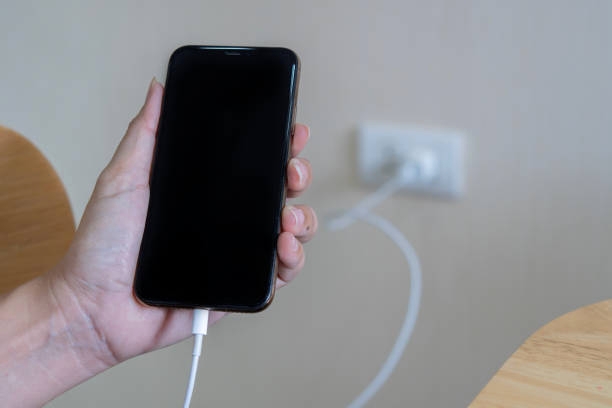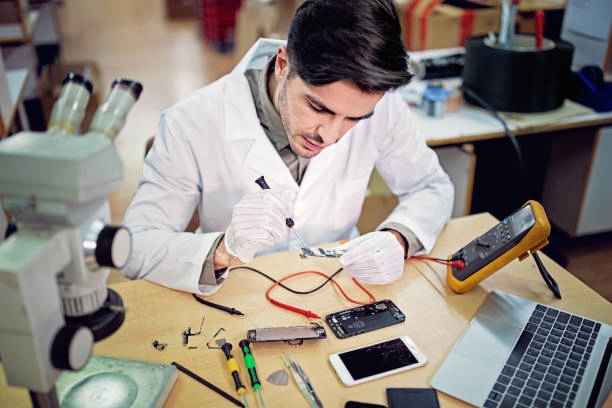why is my phone not charging

Are you frustrated because your phone won’t charge even when it’s connected to the charger all day? You’re definitely not alone—this is one of the most common issues smartphone users encounter, and it can leave you worried about whether the problem is with your device, your charger, or even the battery itself. In most cases, charging problems are caused by simple issues like a worn-out cable, a faulty adapter, dirt or dust blocking the charging port, or software glitches that prevent the battery from recognizing power input. However, sometimes the cause can be more serious, such as battery health deterioration or hardware faults. The good news is that many of these issues can be fixed at home without spending money on repairs. In this guide, we’ll explore the main reasons why your phone is not charging and walk you through practical solutions that can help you quickly get your device back to working normally.
Also read: Why Is My Phone Charging Slowly Even With a Fast Charger?
Identifying the Charging Problem
Before jumping into solutions, it’s important to first understand the type of charging issue you’re dealing with. Different problems require different fixes, so identifying the exact situation will save you time and effort. Below are the most common charging problems you might encounter:
- Your phone doesn’t show that it’s charging when connected.
In this case, you plug in your charger but see no battery symbol, no charging animation, and no percentage increase. On certain devices like the iPhone, you might even receive warnings such as “Liquid Detected in the Charging Port.” - Your phone recognizes the cable but the battery percentage won’t increase.
This usually means the charging icon appears, but the battery stays stuck at the same level or increases very slowly. Often, this points to a faulty cable, a weak power source, or background processes consuming power faster than your phone can charge. - Your phone only charges when the cable is positioned at a specific angle.
If you constantly need to bend, twist, or adjust the cable for it to work, it’s often a sign of a loose charging port or a worn-out cable. This issue usually worsens over time and may eventually stop working completely.
Why Is My Phone Not Charging?
It can be frustrating when you plug in your device only to realize the battery percentage isn’t moving at all. Understanding the possible causes will not only save you stress but also help you fix the issue faster. Below are some of the most common reasons why your phone refuses to charge:
1. Damaged Charging Cable or Power Adapter
One of the first things to check is your charging accessories. Over time, cables can become frayed, bent, or weakened internally, while adapters may lose their effectiveness due to constant use. Even if the damage isn’t visible on the outside, a faulty cable or adapter can interrupt the power flow and stop your phone from charging properly. To rule this out, try using another compatible cable and adapter—if your device charges normally, then you’ve found the culprit.
2. Software or Hardware Malfunction
Sometimes the problem goes beyond cables and chargers and lies within the phone itself. A corrupted system update, background app error, or software bug can interfere with the charging process and stop your device from recognizing the power source. On the other hand, physical hardware issues—like a failing charging IC, damaged battery, or internal circuit problem—can also be the hidden cause. Unlike simple fixes you can try at home, these issues usually require professional attention. If you’ve tested multiple cables, chargers, and outlets but your phone still refuses to charge, it may be time to visit a certified technician or authorized repair shop to properly diagnose and resolve the problem.
3. Worn-Out or Aging Battery
Every smartphone battery has a limited lifespan, and over time its ability to hold and recharge power begins to decline. If your phone has been in use for several years, the battery may have deteriorated to the point where it can no longer charge effectively, or it may drain unusually fast even after reaching 100%. This is a clear sign that the battery is nearing the end of its life cycle. In such cases, the best solution is to replace the battery with a genuine one from a trusted service center. If your device is older and replacement isn’t cost-effective, it might even be worth considering an upgrade to a new phone.
4. Dirty or Damaged Charging Port
Another common reason your phone won’t charge is a problem with the charging port itself. Over time, dust, lint, or tiny particles can build up inside the port and block the connection between your cable and the phone. This prevents power from flowing properly, making it seem like your charger isn’t working. A gentle cleaning with a soft, dry brush, toothpick, or a burst of compressed air is often enough to clear the obstruction. However, if the port has become loose, bent, or physically damaged, cleaning won’t solve the issue. In that case, professional repair may be necessary to restore the connection.
5. Weak or Inconsistent Power Source
The power source you choose has a major impact on how well your phone charges. For example, connecting your device to a laptop, car USB port, or low-capacity power bank often supplies far less current than a standard wall outlet. This can make charging painfully slow or, in some cases, prevent your phone from charging at all. To ensure the best results, always use a stable wall socket along with the original charging adapter that came with your phone, or a certified fast charger that matches your device’s requirements. This not only improves charging speed but also protects your battery from damage caused by inconsistent or weak power delivery.
6. Power-Hungry Background Apps
Sometimes your phone is technically charging, but you don’t notice any increase in battery percentage because background apps are draining power at the same time. Apps that run continuously—such as games, streaming services, or location-based tools—can consume so much energy that they cancel out the charging process. To fix this, try closing apps you’re not actively using or restarting your phone to stop unnecessary background activity. You can also check your device’s battery settings to identify which apps are consuming the most power and limit their usage. This simple step can make a noticeable difference in how efficiently your phone charges.
Also read: How can I make my Android phone battery last longer without power bank?
How to Fix It When Your Phone Won’t Charge
Now that we’ve covered the most common reasons behind charging problems, let’s focus on the solutions. The good news is that in many cases, you can resolve the issue on your own without needing professional help. Here are some effective methods to try when your phone refuses to charge:
1. Try a Different Charging Cables
One of the easiest fixes is to test your phone with another cable. Charging cables can wear out over time, especially if they’re constantly bent, twisted, or used with different adapters. Even if your current cable looks fine on the outside, the internal wires may be damaged and preventing power from reaching your phone. If you have a spare cable at home, plug it in and see if your device starts charging normally. If not, consider borrowing one from a friend or purchasing a certified replacement. This quick step often solves the problem without any extra effort.
2. Clear Your Phone’s Cache
Sometimes charging problems are linked to corrupted cache files or buggy apps running in the background. Over time, cached data can build up and interfere with the way your phone’s software communicates with its hardware, including the charging system. Clearing the cache can remove these temporary files and often resolves hidden glitches without affecting your personal data. To do this, head to your phone’s Settings, look for Storage or Apps, and choose the option to clear cache. The exact steps may vary depending on your device, but most modern smartphones make it a quick process. For example, many HONOR phones allow you to clear cached data directly from the settings menu in just a few taps. Once cleared, plug in your charger again to see if the issue improves.
3. Clean the Charging Port
A surprisingly common reason phones stop charging is a dirty charging port. Tiny particles of dust, lint, or other debris can build up inside the port and block the charger from making a solid connection. Even a thin layer of dirt can be enough to interrupt the power flow. To fix this, gently clean the port using a soft, dry brush, wooden toothpick, or a short burst of compressed air. Be careful not to poke too hard, as the port’s internal pins are delicate and can be damaged easily. Once cleaned, reconnect your charger and see if the problem is resolved. Keeping the port free of debris not only restores charging but also helps extend the lifespan of your phone.
4. Restart Your Phone
One of the easiest solutions to try when your phone won’t charge is a simple restart. Minor software glitches or frozen background processes can sometimes block your device from recognizing the charger. Press and hold the power button until the restart or power-off option appears, then restart your device. After it powers back on, reconnect the charger and check if the charging process starts. This quick reset often clears temporary errors and gets your phone working normally again.
5. Close Background Apps While Charging
Even when you’re not actively using them, certain apps keep running in the background and can drain a surprising amount of power. Apps that stream videos or music, constantly use location services, or perform heavy tasks like gaming updates may consume energy faster than your charger can supply it—especially if you’re plugged into a weaker source like a laptop USB port. To prevent this, close any unnecessary apps before charging. You can also check your phone’s battery settings to see which apps are using the most power. By reducing background activity, you’ll free up more energy for charging and help your phone’s battery fill up much faster.
6. Remove the Phone Case
While phone cases are great for protecting your device from drops and scratches, they can sometimes cause unexpected charging issues. A bulky or poorly designed case may block the charging cable from fitting securely into the port, which leads to a weak connection or prevents charging altogether. Heat buildup is another problem, as certain thick cases can trap heat while charging, affecting both the battery and charging speed. To rule this out, remove your case and connect the charger directly to your phone. If the device charges normally without the case, you’ll know the case was the culprit. In that situation, consider switching to a slimmer, better-fitted case that won’t interfere with charging.
7. Visit a Service Center

If you’ve tried all the basic fixes and your phone still refuses to charge, the issue may be more serious than a simple cable or software glitch. Problems like a damaged charging port, a failing battery, or internal hardware faults often require professional attention. At this point, the best step is to take your device to a certified technician or an authorized service center. Trained specialists can run a full diagnostic check, identify the exact problem, and carry out safe repairs using genuine parts. While this may involve some cost, it ensures your phone is fixed correctly and helps prevent further damage that could occur from DIY attempts.
Also read: why ls My iphone Not Charging
Conclusion
Dealing with a phone that won’t charge can be frustrating, but in most cases, the cause is something small and easy to fix—like a faulty cable, a dirty charging port, or background apps draining your battery. By carefully working through the solutions we’ve covered, you can often get your device charging again without needing professional help. However, if the problem persists after trying these fixes, it may point to a deeper hardware or battery issue that requires expert repair. The key is to start simple and eliminate the most common causes first. With the right approach, you’ll save time, avoid unnecessary stress, and keep your phone working as it should.
Frequently Asked Questions(FAQ)
1. Why is my phone not charging even though the charger is plugged in?
When your phone refuses to charge despite being connected, the issue often comes down to something simple like a damaged charging cable, a weak adapter, or dust clogging the port. In other cases, software glitches or battery health problems may be the cause. The best way to troubleshoot is by testing with another cable and adapter, cleaning the port gently, and restarting your device to rule out the most common culprits.
2. How do I know if my phone’s charging port is damaged?
A clear sign of a damaged charging port is when your phone only charges if the cable is positioned at a certain angle or if the charger feels loose when plugged in. You might also notice that the phone shows the charging icon but the battery percentage doesn’t increase. If cleaning the port doesn’t fix the problem, chances are that the port is physically damaged and needs professional repair.
3. Can software updates affect my phone’s charging?
Yes, a faulty or incomplete software update can sometimes interfere with the way your phone recognizes a charger. This may cause the device to charge more slowly, stop charging altogether, or display false battery percentages. Restarting the device, clearing the cache, or installing a newer update usually fixes the issue, but if the problem continues, you may need technical support.
4. Is it safe to charge my phone overnight?
Most modern smartphones come with built-in protections that prevent overcharging, which means leaving your phone plugged in overnight won’t immediately damage the battery. However, continuous overnight charging can keep the battery at 100% for long hours, generating heat that slowly shortens its lifespan. For healthier long-term use, it’s best to unplug once it reaches full charge or use a smart charger that regulates the power flow.
5. When should I replace my phone battery?
Phone batteries naturally wear out over time, and most last about two to three years depending on usage habits. If you notice your phone draining unusually fast, shutting down before the percentage reaches zero, or struggling to charge past a certain point, it’s likely time for a replacement. Replacing the battery not only restores performance but also helps extend the overall lifespan of your device.

